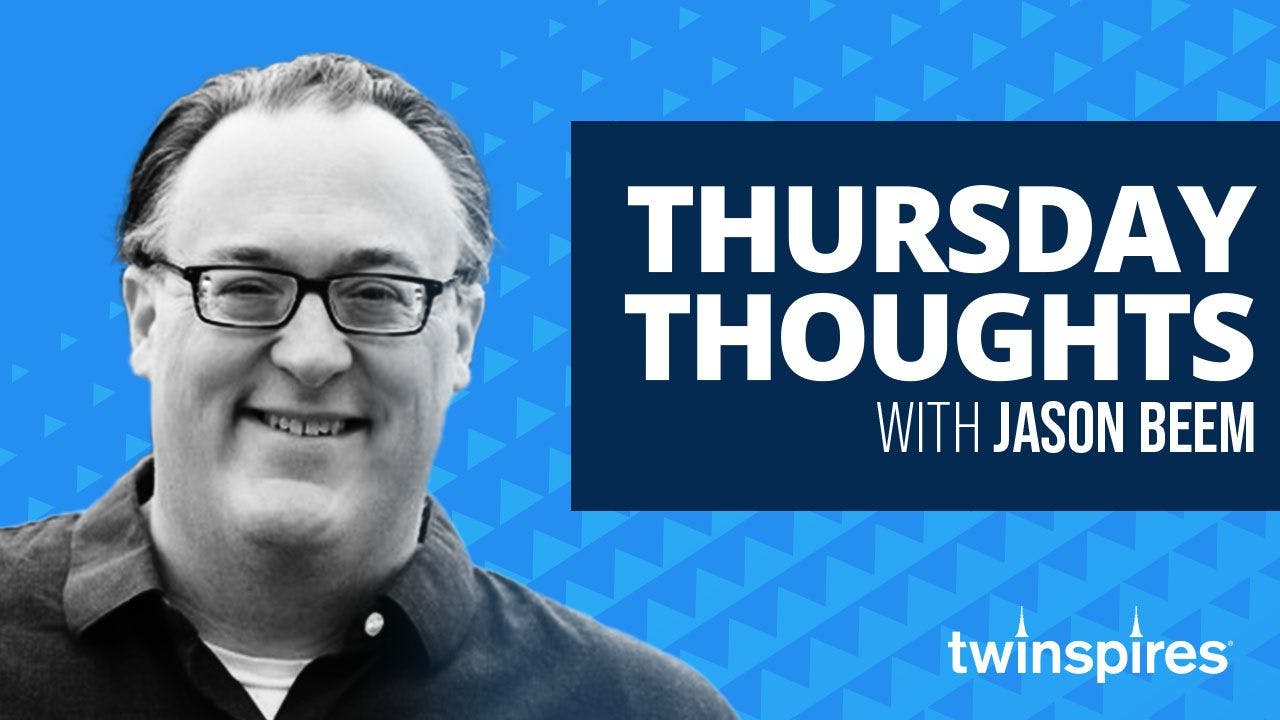Jason Beem's Thursday Column for Aug. 3, 2023

A good Thursday morning to you all! I know most weekends this time of year are “big weekends,” but between Whitney Day at Saratoga, the Hambletonian, Del Mar, Kentucky Downs Preview Days at Ellis, and the West Virginia Derby, it feels almost too crowded with action. I think I’ll personally be distracting myself with nerves about next weekend’s Arlington Million (G1) to distract from all the good racing this weekend.
I think I’m most excited for the Test S. (G1) at Saratoga to see Kentucky Oaks (G1) winner Pretty Mischievous take on Dorth Vader and a host of other rivals in the seven-furlong, Grade 1 event. I’ve been high on Dorth Vader ever since seeing her win at Tampa last year, and she’s put together a pretty nice string of races, and I think a breakthrough win is there for her.
Today’s column topic is about days and post times. I feel like I see lots of players discussing those issues regularly, and I can definitely attest it’s something that we in the industry talk a lot about.
Obviously most tracks are trying to maximize their handle and the exposure of their signal. I say most because there are some that I truly believe don’t care at all. But overall, I think most places want their signal to be seen and bet. Now a huge part of that is the quality of the product. Tracks that run higher quality horses as a whole tend to handle more money than tracks with lesser quality stock. Obviously factors such as location, takeout, betting menus, and an assortment of other reasons can have effects, but overall the quality of product does tend to correlate a fair bit with the handle.
However, a massive part of a track’s success or failure is also when they run. Not just the days or nights they choose to offer racing, but the post times they run at during the day and how a track is able to navigate with all the other tracks running. For smaller and mid-size tracks the answer is generally trying to find days and times when the big dogs aren’t running.
I learned this at Portland Meadows and River Downs when I first started working in the game. River Downs we ran Tuesdays and then Thursday through Sunday. Tuesdays without fail were always our biggest total handle day and always the smallest on-track crowd. Portland Meadows, when I started going there, ran Friday nights and then Saturday and Sunday days. They handled around $100,000 a day from all sources. Then they went to Saturday, Sunday, Monday, and Mondays started doing $300,000 or $400,000. When I started calling there they moved to Sunday, Monday, and Tuesday, and by the time I left we had all but abandoned weekend racing and were chasing that sweet, sweet simulcast handle racing Monday, Tuesday, and Wednesday.
Some photos from #PortlandMeadows over the years. Always loved the view of Mt. Hood from the roof. pic.twitter.com/gm4cUxkhMC
— Jason Beem (@BeemieAwards) March 31, 2019
Our handle was regularly over $500,000 on all those days, and I think we had at least a dozen or so million-dollar days. I think the all-time high was like $1.4 million, which compared to what they handled when I first got there was incredible. It seemed like a big win at the time, and our prominence nationally was going up. But we’d completely abandoned most of our local fans as only a few hundred could come out on those weekdays vs. the old weekend schedule. I’d constantly be asked “why on earth don’t you run weekends so I can go?”
All handle isn’t created equal. Tracks obviously get all of the takeout from bets made on track, and a much smaller percentage on ones made away from the track. So a track that does $200,000 in on-track handle often will make more money than one that does $1 million where all the handle is off-track. Of course as players, we want to play into as big a pool as possible, but I just bring that up so people understand the basic economics of handle, as sometimes on-track handle produced several times more actual revenue than off-track handle.
I’ve worked at a few tracks now that have done the weekday only method, and there are a number of tracks, particularly during and post-pandemic, who have shifted their days or schedules away from more traditional schedules to try and maximize handle. And I get that, and in many cases agree with it.
Revenue aside, and obviously that’s a huge part of business, but I do think getting people to the races is still an important thing. We constantly talk about growing handle and the ways to do that, whether it’s lower takeout or other means to make the product more attractive. And I believe that is necessary for us to have future growth. But I also believe people need to be exposed to live racing. I know some people who have come to the game and betting through watching on TV or simulcasting. But I know wayyyyy more people who were exposed to the game and got excited about it through live racing.
I think every track needs to do what’s best for their revenue, but I also think it’s incumbent upon us to make the betting side and the sport side better and expose both to as many people as possible. I’m not a business person and there are so many smarter people than me to make cases for when tracks should run and why. I understand all sides of the discussion and look forward to having those discussions more in the future as tracks continue to adjust and try and find their best spots.
ADVERTISEMENT



